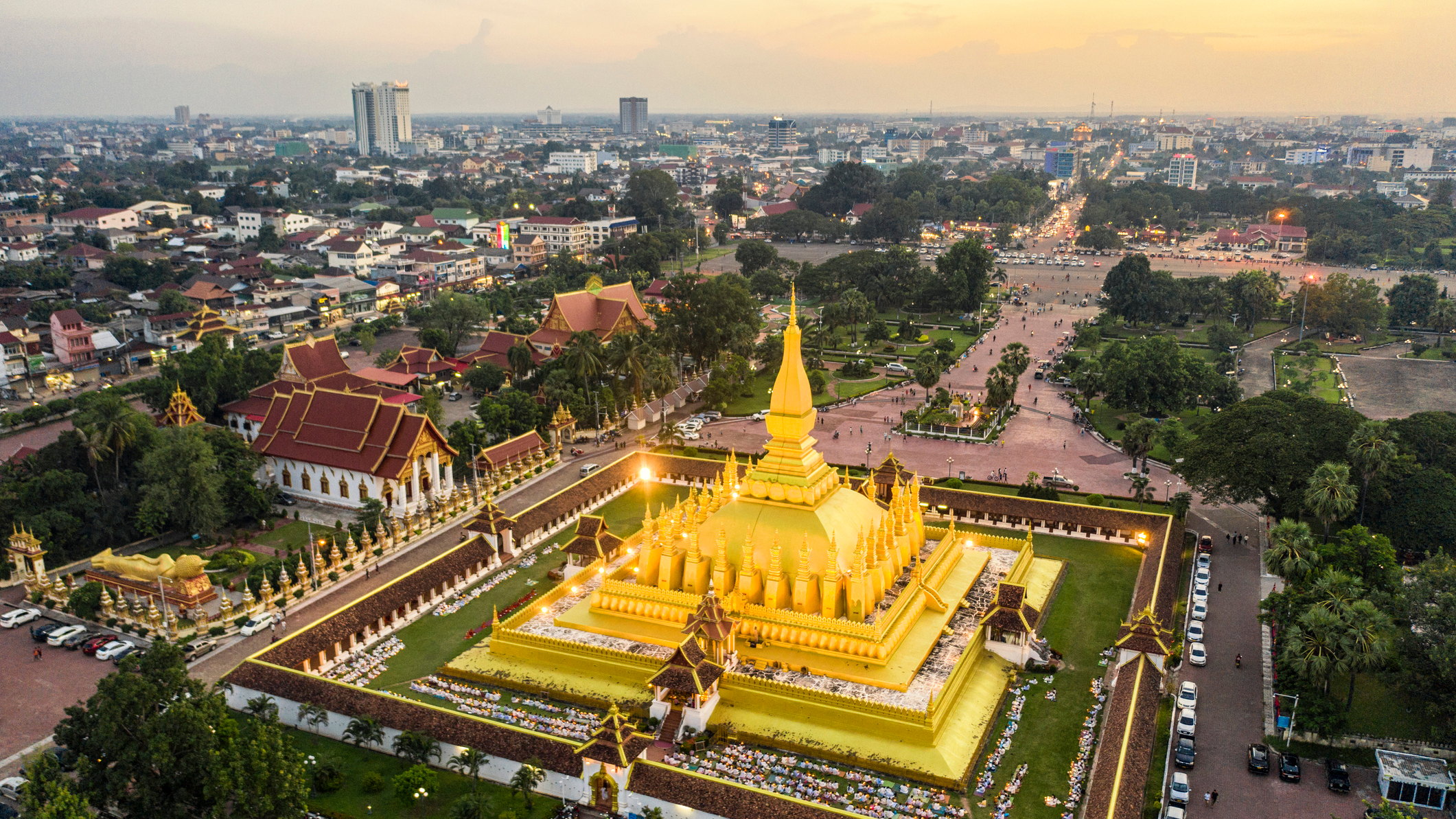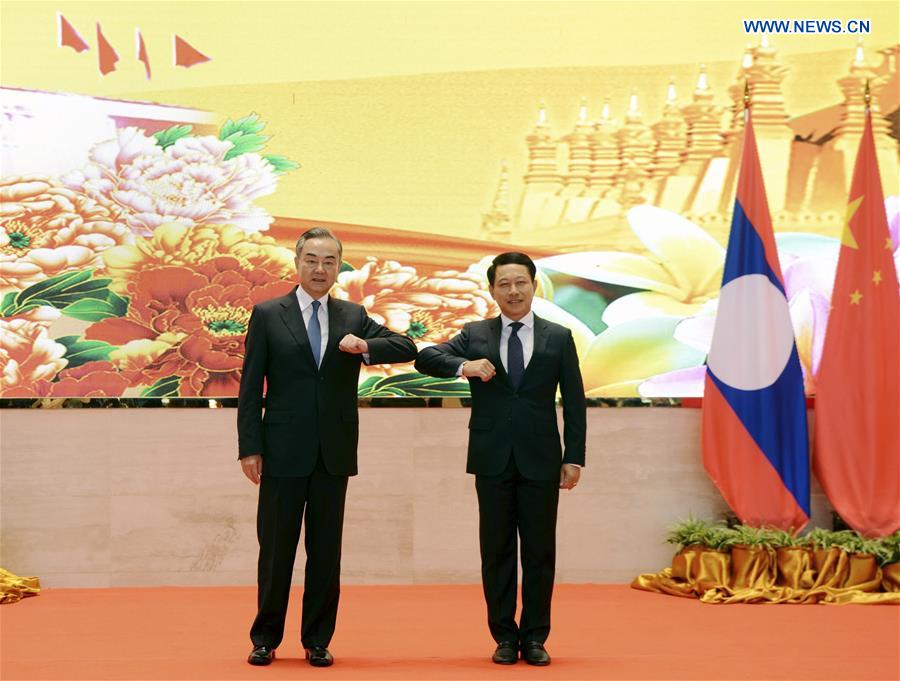
That Luang or "Great Stupa" is an important Buddhist monument located in Vientiane, Laos. /Getty images
That Luang or "Great Stupa" is an important Buddhist monument located in Vientiane, Laos. /Getty images
Editor's note: Keith Lamb is a University of Oxford graduate with a MSc degree in Contemporary Chinese Studies. His primary research interests are international relations of China and China's "socialism with Chinese characteristics." The article reflects the author's opinions, and not necessarily the views of CGTN.
On Wednesday Chinese State Councilor and Foreign Minister Wang Yi met with his Lao counterpart Saleumxay Kommasith in Vientiane. Both sides agreed to enhance strategic communication and accelerate bilateral economic cooperation under the framework of the Belt and Road Initiative (BRI).
China is offering a reduction of tariffs for 97 percent of products imported from Laos, Myanmar and Cambodia.
Laos has been a keen participant in the BRI since its instigation in 2013 and for good reason – the BRI is able to offer precisely what a landlocked developing country like Laos needs.
One of the most significant projects is the high speed China-Laos railway which when completed in December 2021 will run from Kunming, the capital of China's Yunnan Province, to Vientiane.
This project is urgently needed as Laos currently only has about 3.5 kilometers of narrow-gauge railway which is unable to meet the needs of the Laotian growing economy. From my own visits to Laos, travelling on rickety buses that get nowhere fast, the boon this railway will provide for the country's development is undeniable.
Transport will be faster and cheaper which will spur the tourist industry on from Chinese tourists who are underrepresented compared to Western backpackers who usually make relatively brief sojourns there.
With a boost in tourism there will be more employment for locals. Aside from tourism the soon to be completed railway will make transportation of Laotian products to other Southeast Asian countries more convenient with the cheaper costs and faster transport times.
Of course, compared to air, which is the current favored method for arriving in Laos, high-speed rail has numerous advantages.
For example, it drives economic development between not only the departure and arrival destination but also all stops in between. It is also a greener mode of transport.
Despite the manifold benefits of Chinese-Laotian cooperation, the Western press sees Chinese Laotian collaboration as a nefarious plan while parts of India's press has framed the cooperation as one being tipped in Beijing's favor. Here Laos gets loans in return for political support on issues such as Taiwan; Chinese companies get access to Laotian resources and Beijing gets a transport connection from China through Laos to Thailand.
The problem is this narrative negates Laos of any free will of its own. It may well be beneficial for China to have greater transport connection into Thailand but it is self-evident that these transport connections are needed even more urgently by Thailand and especially Laos, whose per capita GDP for 2020 according to the International Monetary Fund estimates lies at $8,221 and is ranked 119th in the world. In contrast Thailand's is $18,073 (ranked 70th) and China's is $17,206 (ranked 73rd).

Chinese State Councilor and Foreign Minister Wang Yi touches elbows with Lao Foreign Minister Saleumxay Kommasith prior to their talks in Vientiane, Laos, October 14, 2020. /Xinhua
Chinese State Councilor and Foreign Minister Wang Yi touches elbows with Lao Foreign Minister Saleumxay Kommasith prior to their talks in Vientiane, Laos, October 14, 2020. /Xinhua
The charges of loans being granted in return for Laotian political support put the "cart before the horse." The Lao People's Democratic Republic with its Marxist-Leninist philosophy has always had a close relationship with the People's Republic of China which has only strengthened with BRI cooperation.
In terms of China getting access to Laotian resources, this is called trade. Laos is relatively poor and undeveloped with a small population but it is rich in resources with its gold, bauxite, tin and copper deposits as well as oil and gas reserves.
China on the other hand, relative to the size of its population, is resource poor but has infrastructure and technical know-how, along with proven developmental capabilities, that make its engagement with Laos a relationship characterized by win-win.
To say that Laos should go elsewhere for its primary development beclouds geopolitical, historical and economic realities.
There are few countries other than China that does development at developing country rates.
For example, the World Bank estimates that China builds high-speed railway at two-thirds the price of other countries. Added to this is the fact that because Laos borders China, it further brings costs down. It would simply not be economical for other high-speed powerhouses such as France and Japan to compete with China.
From a geographical and economical viewpoint, increased connectivity between China, Laos and Thailand is a no-brainer.
According to the Observatory of Economic Complexity in 2018, 51.2 percent of Laos exports go to Thailand and 31.7 percent go to China. As such, increased connectivity between China, Laos and Thailand will augment Laos' economic strength giving it the ability to work on other development projects.
Already, in the pipeline is the $1.9 billion Vietnam-Laos railway link which will start construction in 2021, will be built by the Indonesia Railway Development Consortium in conjunction with Vietnam's HT Construction company and Laos' PetroTrade.
This cooperation between Laos, Vietnam and Indonesia who are all members of the BRI is evidence that Laos is not beholden to a simple relationship of subjugation where it has no will to operate beyond Beijing's commands.
While criticism of China may be fair at times the sorry state of most reporting from those outside the BRI is that there is little contextualizing of the overall situation surrounding the BRI in general. Reading this press, one may falsely get the impression that BRI is a colonial plan when in fact it has been signed up to democratically by the majority of states.
The simple fact is Laos, like the other states that have signed up to the BRI, can make deals, on its own, with whoever it wants. Mainstream analysis, from outside the BRI, needs to drop its patronizing and self-serving mindset and recognize this.
(If you want to contribute and have specific expertise, please contact us at opinions@cgtn.com.)